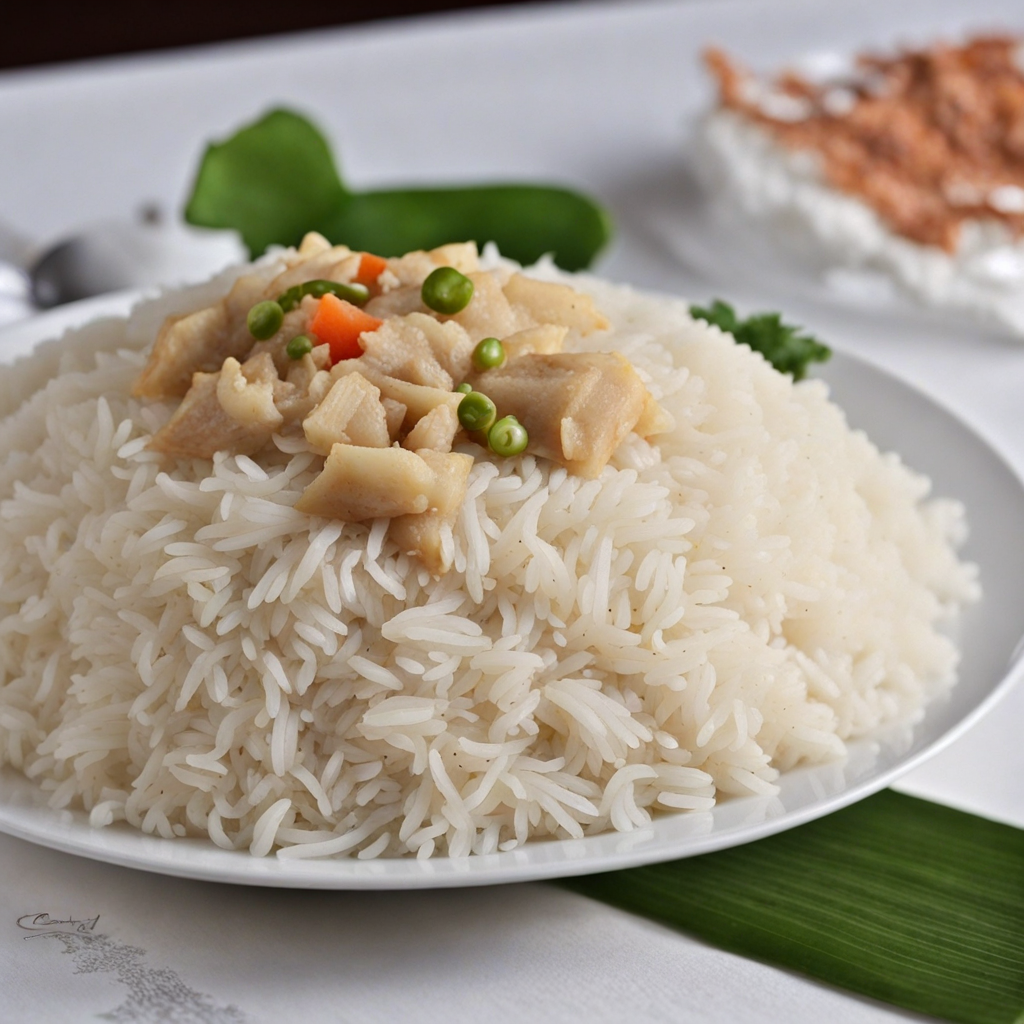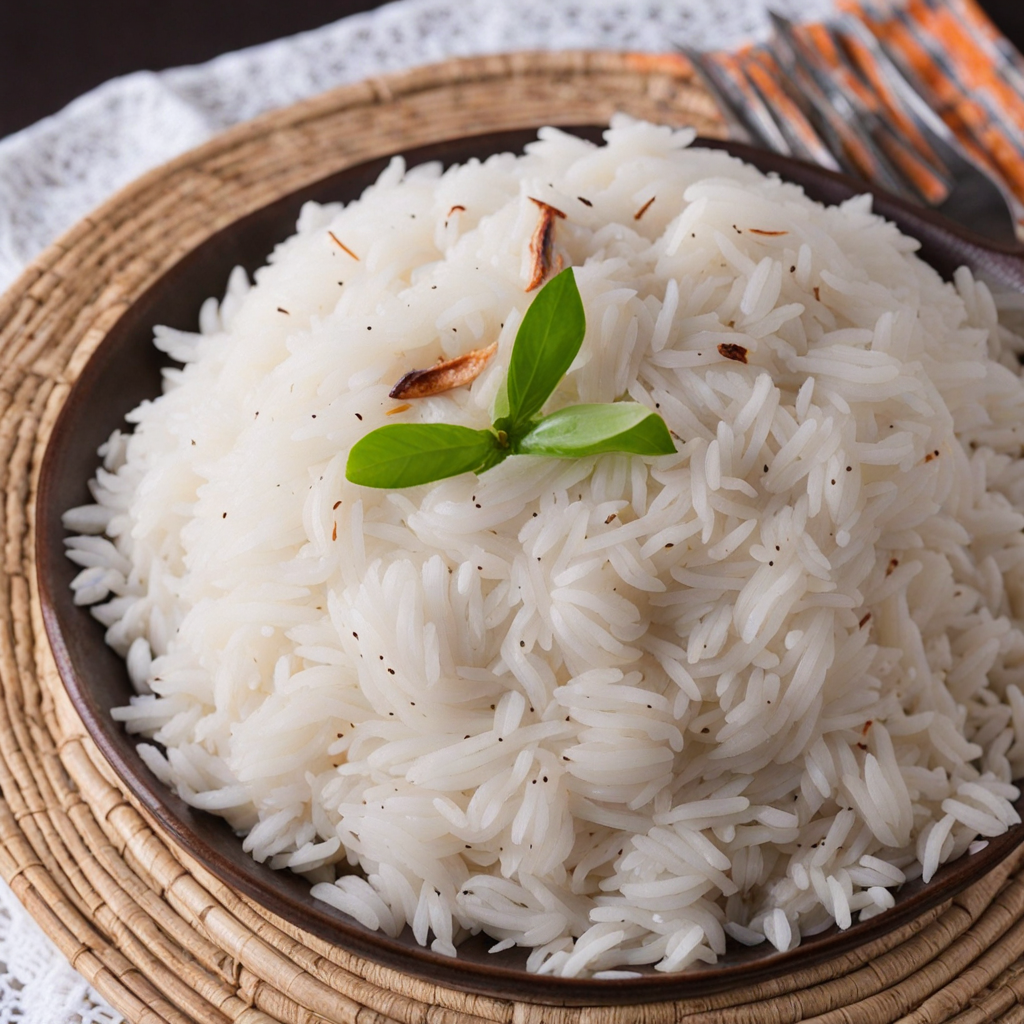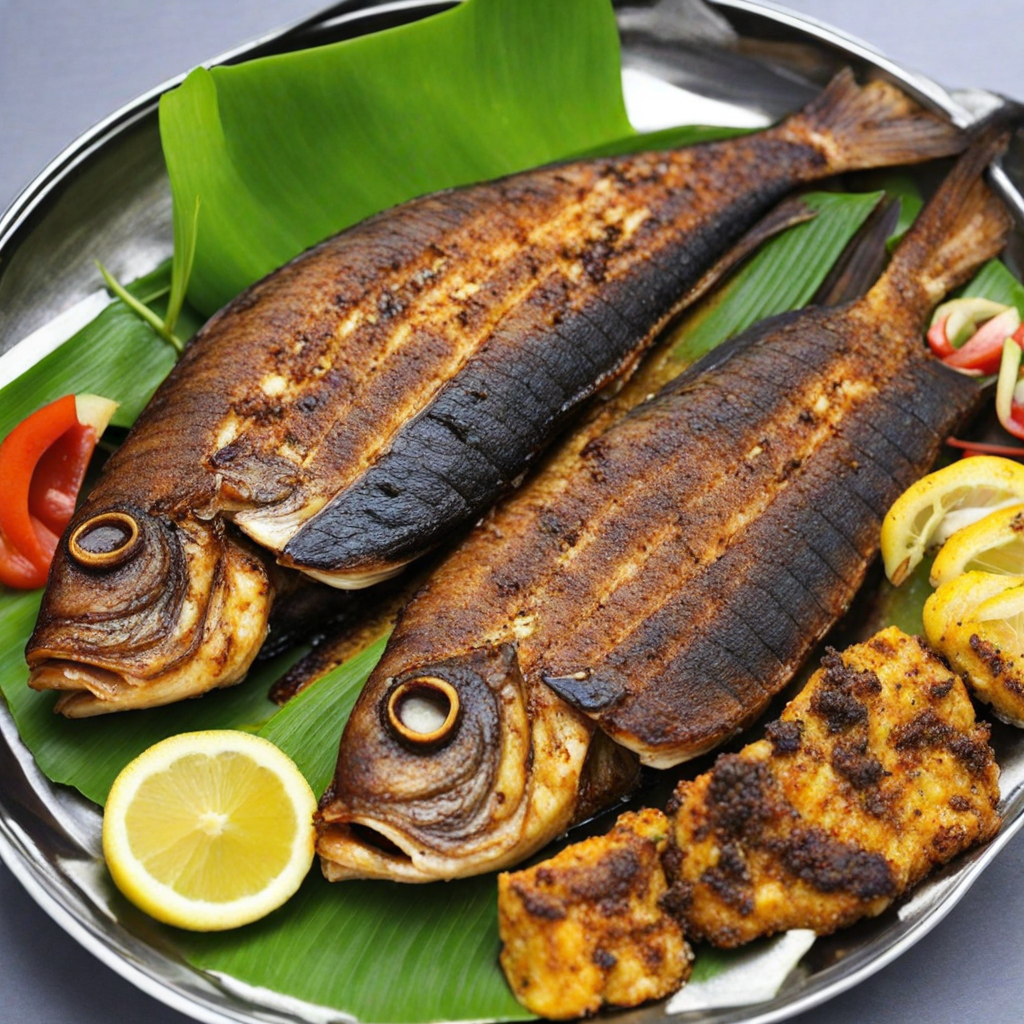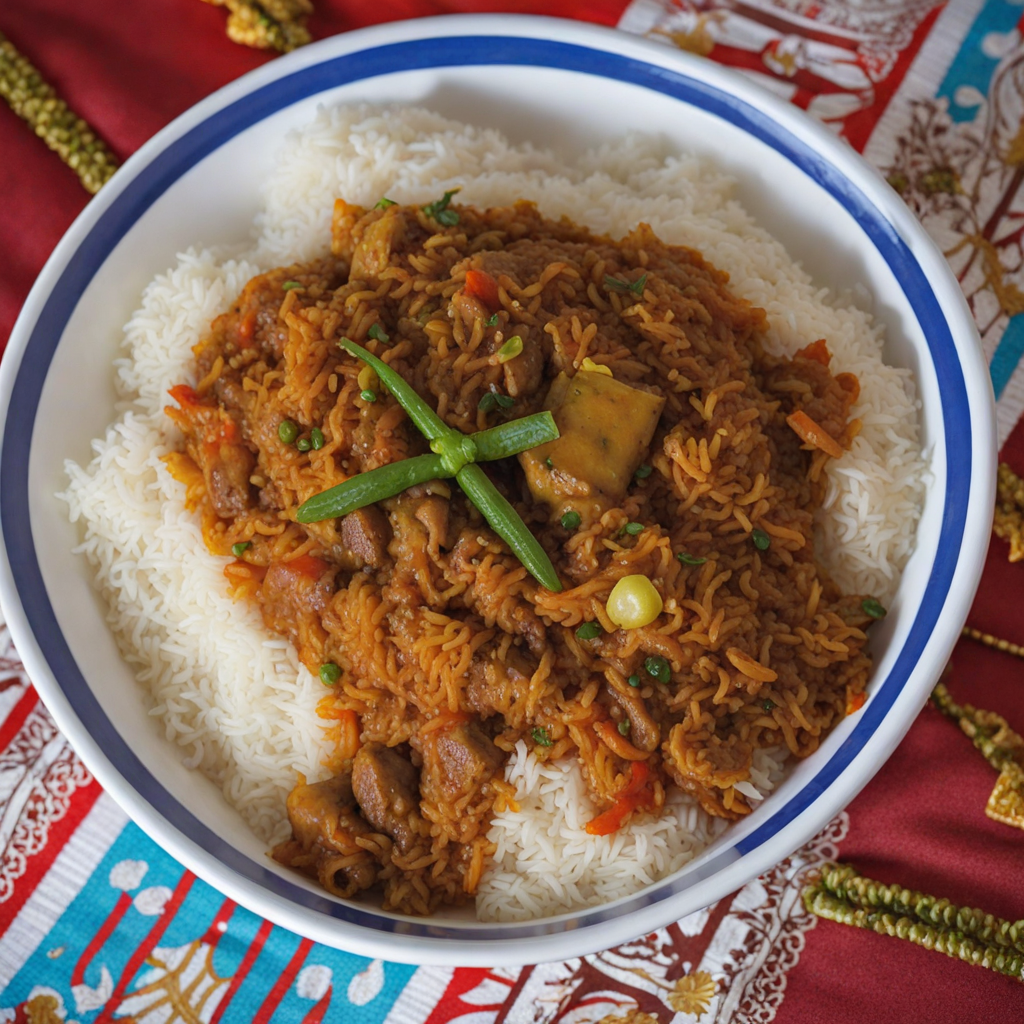Coconut Rice
Coconut Rice from the Comoros is a delightful culinary creation that embodies the island's tropical essence. This dish features fluffy, steamed rice infused with rich coconut milk, creating a creamy texture and an aromatic flavor that transports you to sun-kissed shores. The rice is typically cooked with freshly grated coconut, which adds a subtle sweetness and a delightful chewiness, enhancing the overall experience. The combination of the nutty coconut and the soft, warm rice makes every bite a comforting embrace of flavors that is both unique and inviting.
Coconut Rice is often served as a side dish, complementing various main courses, especially those featuring fish or chicken marinated in local spices. The dish is versatile and can be enjoyed with a variety of sauces, such as a tangy and spicy chili sauce or a savory onion and tomato relish, which balance the sweetness of the coconut. This pairing elevates the dish, creating a harmonious blend of flavors that showcases the culinary diversity of the Comoros Islands.
How It Became This Dish
The Enchanting Journey of Riz au Coco: A Culinary Gem from Comoros #### Origins of Riz au Coco Riz au Coco, or coconut rice, is a beloved dish originating from the Comoros Islands, an archipelago nestled in the Indian Ocean between Madagascar and the African mainland. Comprising three main islands—Grande Comore, Mohéli, and Anjouan—this unique nation is often referred to as the "Perfumed Islands" due to the rich flora and aromatic spices that flourish in its tropical climate. The origins of Riz au Coco can be traced back to the indigenous cultures of the Comoros, which have been influenced by African, Arab, Indian, and French culinary traditions over centuries. The islands’ strategic location along ancient trade routes contributed to a vibrant exchange of ingredients and techniques, leading to a fusion of flavors that define Comorian cuisine today. Coconut, a staple in Comorian life, has been utilized for centuries, not just as a food source but also for its myriad uses in construction, textiles, and traditional medicine. The cultivation of coconuts thrived in the volcanic soil of the islands, making them an integral part of daily life and local harvests. As a result, coconut became a prominent ingredient in many regional dishes, including the cherished Riz au Coco, which combines rice with the sweet, rich flavor of fresh coconut milk. #### Cultural Significance Riz au Coco is more than just a dish; it embodies the cultural tapestry of the Comoros Islands. The preparation of this dish is often associated with family gatherings, festive occasions, and communal celebrations. It serves as a symbol of hospitality and generosity, reflecting the importance of sharing food within Comorian society. Traditionally, Riz au Coco is prepared during significant events such as weddings, religious festivals, and family reunions, where guests are treated to a feast that showcases the island’s culinary heritage. The dish is typically served alongside various meats, fish, and vegetable stews, highlighting the islands’ diverse agricultural bounty. Moreover, as a reflection of the islands' multicultural influences, Riz au Coco is often seasoned with a blend of spices that resonate with the region's history of trade and migration. Ingredients such as cinnamon, cardamom, and vanilla—available due to the islands’ rich biodiversity—are frequently incorporated into the dish, enhancing its flavor and elevating it to a gastronomic experience. #### The Development of Riz au Coco Over Time As the Comoros Islands navigated through periods of colonialism, trade, and cultural exchange, Riz au Coco evolved, adapting to new tastes and ingredients while still retaining its traditional essence. The influence of French colonial rule in the late 19th and early 20th centuries introduced new culinary techniques and flavors, which were seamlessly integrated into local cuisine. The introduction of new rice varieties and cooking methods allowed the preparation of Riz au Coco to diversify. While the original recipe typically calls for white rice cooked in coconut milk, variations began to emerge, incorporating local vegetables, legumes, and proteins. Each island developed its unique spin on the dish, resulting in an array of flavors and textures that reflect the local environment and agricultural practices. In modern times, Riz au Coco has garnered attention beyond the shores of Comoros, as the global interest in exotic and diverse cuisines has risen. The dish has found its way into diaspora communities, where it is celebrated at cultural events and gatherings, allowing people to maintain a connection to their heritage. Chefs in various countries have embraced Riz au Coco, experimenting with fusion recipes that combine elements from other culinary traditions while respecting its roots. The accessibility of coconuts and rice in many parts of the world has enabled Riz au Coco to be appreciated by a broader audience. Contemporary chefs often highlight the dish's versatility, pairing it with international flavors while still honoring the traditional preparation methods that have been passed down through generations. #### Contemporary Perspectives Today, Riz au Coco is often viewed as a symbol of the Comorian identity, embodying the islands' rich history and the resilience of its people. The dish is a testament to the ability of culinary traditions to adapt and thrive in a changing world. As globalization continues to influence food culture, Riz au Coco remains a cherished dish in the Comoros, celebrated for its comforting flavors and cultural significance. Efforts to promote culinary tourism in the Comoros have also brought attention to Riz au Coco, as visitors seek authentic experiences that connect them to the island's rich heritage. Cooking classes, food festivals, and culinary tours provide opportunities for locals to share their culinary skills and knowledge, ensuring that the tradition of preparing Riz au Coco is passed on to future generations. In recent years, with the rise of social media and food blogging, Riz au Coco has gained visibility on global platforms, attracting food enthusiasts eager to discover the flavors of the Comoros. This exposure not only celebrates the dish but also highlights the importance of preserving the cultural narratives that surround it. #### Conclusion Riz au Coco is more than just a dish; it is a culinary embodiment of the Comoros Islands' history, culture, and identity. From its humble beginnings rooted in the islands' agricultural practices to its evolution as a symbol of hospitality and celebration, Riz au Coco continues to evolve while remaining deeply connected to its heritage. As the world becomes increasingly interconnected, this enchanting dish serves as a delicious reminder of the rich culinary traditions that shape our global food culture.
You may like
Discover local flavors from Comoros







